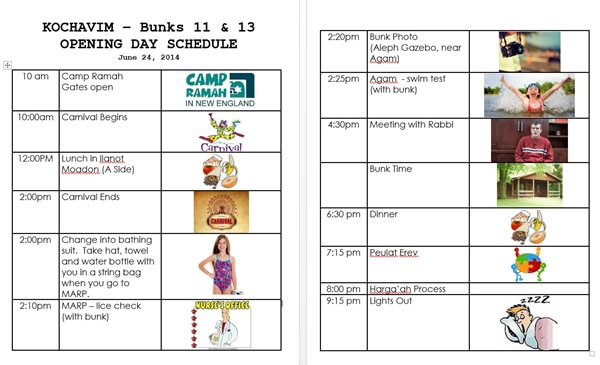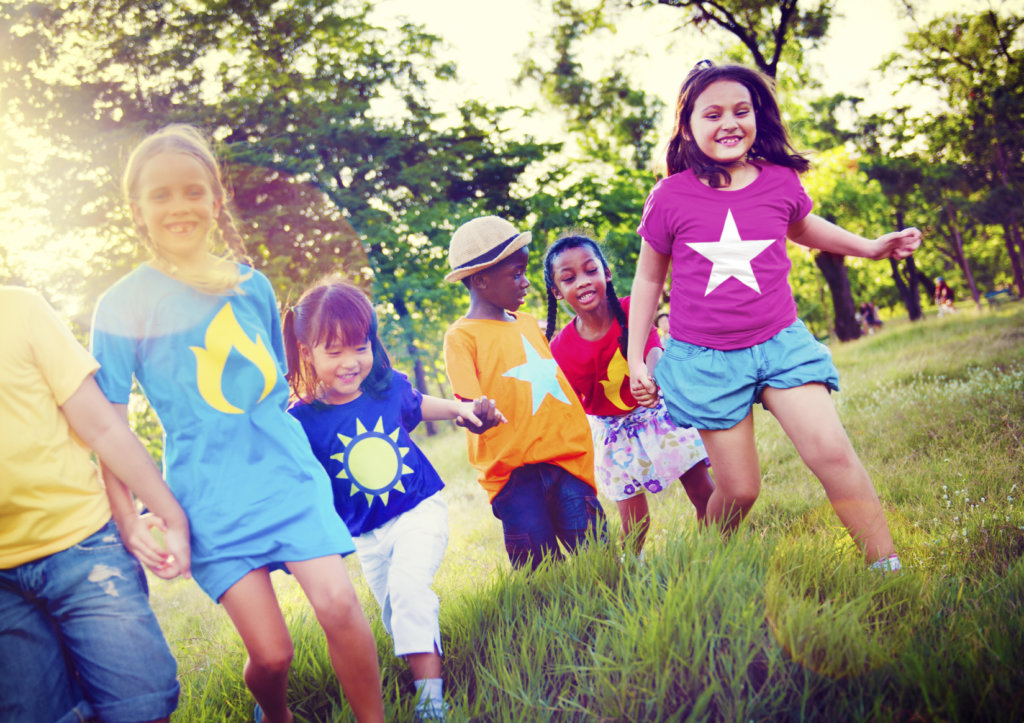In a special new Sight Line feature, we look at four growing trends in the early childhood arena.
Multi-generational Learning
The average age is 92 at Mount St. Vincent, a retirement home in Seattle, yet the atmosphere is alive and vibrant. That’s because Mount. St. Vincent shares its building with the 125 children and teachers of the Mount’s Intergenerational Learning Center preschool. Students and residents learn together, laugh together, and care for each other.
This preschool model is a way to maximize resources, but it’s also part of a growing trend of intergenerational educational programming, currently being explored by institutions across the field of early childhood education. Proponents of this model suggest that young children benefit from extra nurturing and attention, awareness of the aging process and comfort around those with disabilities, a chance to learn social skills, and preparation for the world beyond school. Older adults gain the sense of being needed and appreciated, an opportunity for social interaction, and a way to counteract boredom and loneliness.
What’s more, intergenerational learning holds value in the world of Jewish education as well, where there’s a particular focus on the transmission not just of knowledge, but also of a mesorah – a tradition. Intergenerational learning provides a framework for passing on Jewish values and experience from one generation to the next.
Learn more about this burgeoning trend through these additional resources: Penn State Extension’s Intergenerational Guidebook, Generations United’s Intergenerational Fact Sheet, and Virginia Cooperative Extension’s best practices in Intergenerational Programming.
Deep Experiences in Nature
For a few hours each day, preschool students at Fiddleheads Forest School in Seattle zip up their waterproof suits and head into the forests of the University of Washington Botanic Gardens to explore. They build shelters, hunt for earthworms, follow eagle calls, and go on “listening walks” where they silently focus on the sounds of the outdoors. Students are trained to notice, to take in what’s around them, examine, and formulate ideas about what they see. Outside the classroom it’s difficult to plan what students encounter, so teachers at Fiddleheads have gotten used to following their students’ attention, prompting discussion and investigation based on what they see and find interesting.
Fiddleheads Forest School is not alone. Early Childhood programs across the country are tapping into this concept of immersion into the outdoors by creating opportunities for children to interact with nature, and using the natural world as a key learning tool. Preschool students are being given more opportunities for child-centered outdoor investigations, unstructured play and exploration, and hands-on nature based activities.
New research shows that children who play and learn in nature grow up healthy, smart, and happy. What’s more, this model encourages exploration and curiosity, teaches scientific method and observation skills, supports creativity and problem solving, helps reduce stress, provides young children with positive experiences of the natural world, affords a wider diversity of learning experiences, and allows for increased physical activity – which reduces childhood obesity and leads to greater focus. Gardening and tracking the changing seasons helps develop patience and attentiveness and provides a platform to teach about nutrition. Outdoor exploration teaches social and emotional skills, as it allows for a greater variety of interactions with peers. Even in urban settings, early childhood institutions are finding ways to incorporate nature into the learning. They are planting gardens, exploring local parks, or just heading outside to peek at the weeds, smell the flowers, and find some insects.
For more information on deep experiences in nature for early childhood students, take a look at resources from these institutions: Early Childhood News, Head Start, Bank Street College of Education, NC State University, and Green Hearts.
Mindfulness for Miniatures
At the Children’s Community School, a preschool in Philadelphia, PA, students spend time breathing, stretching, and posing. They listen to bells, observe quiet time, participate in yoga-centered movements, and visualize thoughts. Students discuss how a high note sounds, how breathing like a snake makes their chest and mouth feel, and how sitting up straight and tall affects their body and thoughts.
This is all part of the school’s mission to infuse the curriculum with mindfulness, which, according to Jon Kabat-Zinn, the biologist who coined the term, is the act of “paying attention on purpose.” At Children’s Community School, students are trained to take notice of things like their breath and their movements. They learn to say things like “I notice that I’m tired” or “I feel like I need to move my body.”
Research is showing that being mindful and building self-awareness can have positive health benefits such as alleviating physical and emotional discomfort and stress. Coupled with studies demonstrating how mood and emotional states affect learning, this makes a strong case for purposefully instilling mindfulness in the classroom. There is a growing trend in early childhood education to do just that.
Traci Childress, the Co-Founder of Children’s Community School, speaks about the importance of building “mindfulness muscles” at a young age so that students become familiar with the routines and exercises and can use them to problem solve. And practicing mindfulness offers benefits for teachers, too, by improving their own well-being and helping them become more effective teachers.
For more information on mindfulness in education, take a look at these resources: Mindful Schools, Antioch University Mindfulness Blog, Association for Mindfulness in Education, Mindful Teachers, and Learning and the Brain.
-By Eitan Novick, for The Covenant Foundation
Inclusive Pre-Schools
When Joan Shrensky made aliyah in 1981, a friend with a child with disabilities, knowing of Shrensky’s background working with Head Start in the U.S., asked if she’d consider starting a gan that included children with special needs. Mercaz Harmony was born. Today, it’s known as Magen Avraham/Gan Harmony, and it serves 64 children—with and without disabilities—in four classes in the Har Nof neighborhood of Jerusalem. Children ages 2 to 6 with Down Syndrome, autism, developmental delays and other disabilities receive occupational, speech and language, and play therapies and an extensive “sensory diet” through the course of their long, stimulating day, alongside neurotypical children.
When children with disabilities from Magen Avraham graduate at age six, they go on to a wide range of programs—from special education schools, to mainstream and inclusive schools. And the typical children go on to a life of greater understanding of and comfort with people who are both similar and different from them.
STARS Early Childhood Intervention Program of the Evelyn Rubenstein JCC in Houston, Texas, an inclusive pre-school in the United States that could be thought of as a sister-school to Gan Harmony, is similarly impressive. In the Bertha Alyce Early Childhood School, approximately 10% of the 160 students, ages 2 to 5, have visible and invisible disabilities and developmental delays.
According to Faye Bankler Casell, a child development specialist and consultant to the program, who recently assumed the position of assistant director of preschool services, notes that the STARS program began more than ten years ago as a self-contained classroom— and has evolved ever since to be more inclusive. “The students were developing in the self-contained classes, but we realized that if they were primarily with other students who had social and speech and language delays, they won’t gain as much,” Casell reports. “A few years ago, our director felt we could do even better. Last year, we dipped our toes. First, one child was mainstreamed; by the spring, six were included. By this past fall, we were ‘all in!”
This school year, all sixteen students were included in the morning sessions, with the program carefully tailored to the needs of each child. Numerous therapies including speech and language, occupational and music therapy, were offered in a flexible manner. “I know it sounds insignificant, but the students with disabilities all had cubbies in the classroom with their typical peers–and their names were on the door and roster—with no distinction from the other students,” reports Casell. Students returned to the self-contained classroom for the periods after lunch. The next step in the evolution of the program? “Next fall, we are shuttering our self-contained classroom!”
The response to the increasingly inclusive program has been overwhelmingly positive. For parents of children with disabilities, notes Casell, “It has changed their attitudes about what their children can do”—and they are pleased that the special education staff is not hovering around their children. Some graduates of the program go on to attend public schools and participate in neighborhood sports programs; others attend special education pre-schools.
Parents of typically developing children are similarly pleased with the better staffing ratio and overall number of adults in the lives of their children. Casell observes, “When some of the typically developing children need various therapies or modifications, no one looks askance.”
-By Howard Blas, for The Covenant Foundation








